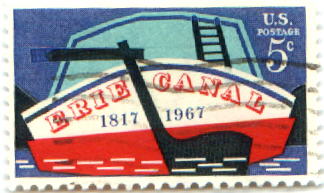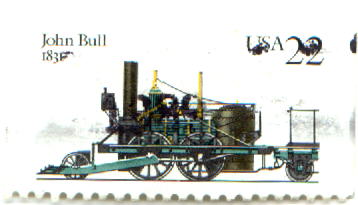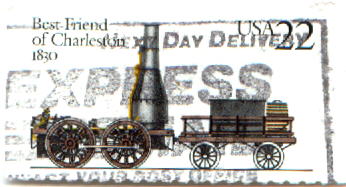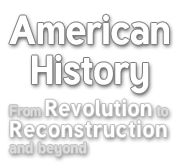Economic expansion, enlarged markets
The United States was greatly affected by the Industrial Revolution taking place in Europe during the 18th and 19th centuries. New inventions and capital investment led to the creation of new industries and the spread of economic growth. Much trade, for example, was made possible by developments in the field of transportation. Beginning in 1825 with the completion of the Erie Canal, which
connected New York City with the Great Lakes region, various
state governments began to play an active role in stimulating the
construction of an internal system of transportation. State
government subsidies and loans to businesses for building canals
and turnpikes became commonplace between 1830 and 1860. These
early efforts were often marked by corruption and economic
disaster, yet more were successes than failures.
Beginning in 1825 with the completion of the Erie Canal, which
connected New York City with the Great Lakes region, various
state governments began to play an active role in stimulating the
construction of an internal system of transportation. State
government subsidies and loans to businesses for building canals
and turnpikes became commonplace between 1830 and 1860. These
early efforts were often marked by corruption and economic
disaster, yet more were successes than failures.
River traffic also improved when the steam engine was fitted to boats. The steamboat could travel up-river, against the flow, markedly reducing the amount of time involved in shipping goods to market.
Like canals and turnpikes, railroads received large amounts of government assistance in the early years. However, unlike other forms of transportation, railroads also attracted a good deal of domestic and European private investment.
 Railroad building requires an enormous sum of capital, and there
is a long period of time before any profits are realized. Yet
conservative people in rural areas were tremendously enthusiastic
about buying shares of railroad stock, often mortgaging their
farms or businesses to do so. Attracted by visions of profits and
playing a role helping to build a better nation, they also voted
for state and local taxes to support the railroads. Later, as
part of the Civil War legacy, the federal government gave
extensive tracts of land to those who promised to build the
missing links in the national railroad system. An astonishing
total of 53 million hectares of land were eventually granted to
railroad builders. Northern Pacific received 17 million hectares:
Southern Pacific, 10 million hectares; and Union Pacific, 8
million hectares. In this way, America got its "sea to shining
sea" connection.
Railroad building requires an enormous sum of capital, and there
is a long period of time before any profits are realized. Yet
conservative people in rural areas were tremendously enthusiastic
about buying shares of railroad stock, often mortgaging their
farms or businesses to do so. Attracted by visions of profits and
playing a role helping to build a better nation, they also voted
for state and local taxes to support the railroads. Later, as
part of the Civil War legacy, the federal government gave
extensive tracts of land to those who promised to build the
missing links in the national railroad system. An astonishing
total of 53 million hectares of land were eventually granted to
railroad builders. Northern Pacific received 17 million hectares:
Southern Pacific, 10 million hectares; and Union Pacific, 8
million hectares. In this way, America got its "sea to shining
sea" connection.
Europe also caught the excitement of investing in American railroads. At one time foreign investors owned the majority of stock in six major railroads. With the discovery of gold in 1849, the United States became more able to finance additional imports of railroad machinery and materials.
 The excitement of railroad building also brought abuses. Often,
unsuspecting buyers paid exorbitant prices for their railroad
stock, or were cheated with stock that was artificially inflated.
Get-rich-quick schemes abounded, and many people lost their
savings. Fortunes were made overnight by financial manipulators.
The excitement of railroad building also brought abuses. Often,
unsuspecting buyers paid exorbitant prices for their railroad
stock, or were cheated with stock that was artificially inflated.
Get-rich-quick schemes abounded, and many people lost their
savings. Fortunes were made overnight by financial manipulators.
Nevertheless, through a combination of vision and foreign investment, the discovery of gold, and a major commitment of America's public and private wealth, the nation was able to develop a large-scale railroad system, providing the base for the industrialization that followed.
